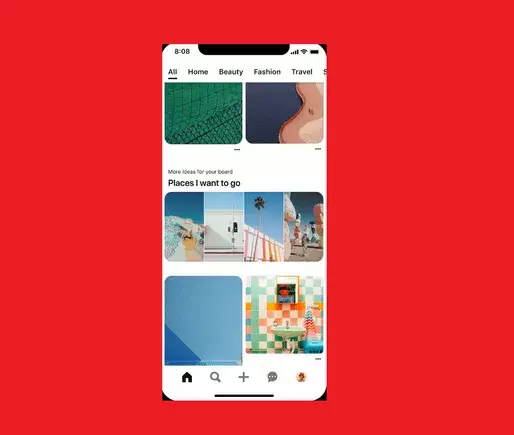In an age where digital visual content reigns supreme, platforms must adapt continually to maintain user engagement. Pinterest, the beloved visual discovery engine, has recently introduced an innovative mechanism in the form of full-width modules tailored to enhance user interaction. These modules are not just aesthetic upgrades; they represent a strategic overhaul in how Pinterest seeks to foster deeper engagement with its user base. But amidst the excitement of new features, one must ask: are these updates genuinely beneficial for users, or are they merely cluttering an otherwise streamlined feed?
Deciphering the New Module Types
Pinterest has rolled out two distinct types of modules that promise to redefine user interaction: Landing Page Modules and Carousel Modules. The Landing Page Modules function as gateways that transport users to specific landing pages filled with a plethora of interactive Pins. Meanwhile, Carousel Modules consist of a horizontally arranged collection of Pins, designed to give users a broader view of potential inspirations. Both aim to augment the typical user experience by presenting a varied array of content, but it’s essential to scrutinize their real impact on the platform’s usability.
On the surface, this seems like a fantastic initiative. After all, who wouldn’t want a vibrant array of content options? However, while the intention may be noble, one cannot overlook the potential risks of saturation—as more categories and options flood the feed, the essence of the personalized experience that Pinterest has prided itself on might begin to disintegrate. The beauty of Pinterest has always been its focus on simplicity and user-oriented curation. Each addition risks complicating that user journey.
Smart Engagement: A Personalized Approach
Pinterest has publicly committed to developing a more personalized experience through a nuanced module display system. The platform claims to leverage historical user engagement to determine which users receive specific modules, thereby ensuring a tailored interaction. If a user repeatedly overlooks a module, Pinterest algorithmically manages what they see, momentarily withdrawing the module from their feed. This clever strategy aims to mitigate disengagement and keep the user experience fresh and relevant.
However, while this sounds like a step in the right direction, one must question whether the algorithm can truly deliver a fully customized experience. Users are multifaceted, often oscillating between different interests in various contexts. Reducing visibility based on previous interactions may inadvertently alienate users from content that could still inspire them—an inspiring vintage pin, for instance, might be missed purely due to previous disinterest in a similar module. The boundaries programmed by such algorithms might inadvertently constrain the very creativity they aim to promote.
Optimizing the Feed: Balancing Act or Balancing Blunder?
Another noteworthy development is the introduction of what Pinterest refers to as the “skip slot” approach, designed to integrate modules more fluidly into the feed. The idea that only high-potential modules can temporarily supersede engaging Pins addresses one critical concern: user engagement erosion. By dynamically blending regular Pins with new modules based on predicted interaction patterns, Pinterest strives to prioritize user satisfaction.
Nonetheless, the implementation of dynamic placements raises an essential question: Could this threaten the very originality that often draws users to the platform? Users may find themselves bombarded with a rollercoaster of content types, leaving them overwhelmed in a sea of options rather than inspired. There’s an argument to be made that the essence of creativity sometimes lies in constraints, and by continuously fine-tuning their algorithm to maximize engagement at all costs, Pinterest risks diluting the authenticity that captivated its audience in the first place.
Impact on Marketers and Content Creators
For marketers and content creators, these changes signal a crucial paradigm shift. The redefined modules offer fresh avenues for showcasing products and ideas but also require a more nuanced understanding of consumer interaction. The dual-edge sword of increased visibility accompanied by the risk of overwhelming users necessitates a thoughtful approach to content strategy.
Ultimately, while Pinterest’s new modules might offer exciting prospects for user engagement, the challenge lies in ensuring that the platform remains a sanctuary of inspiration rather than a bustling marketplace. Striking the right balance between engagement and user experience will be crucial; marketers need to remain vigilant about how these changes affect their strategies and ultimately how users perceive content on the platform. Creativity must remain the anchor amidst the waves of evolving digital landscapes.

